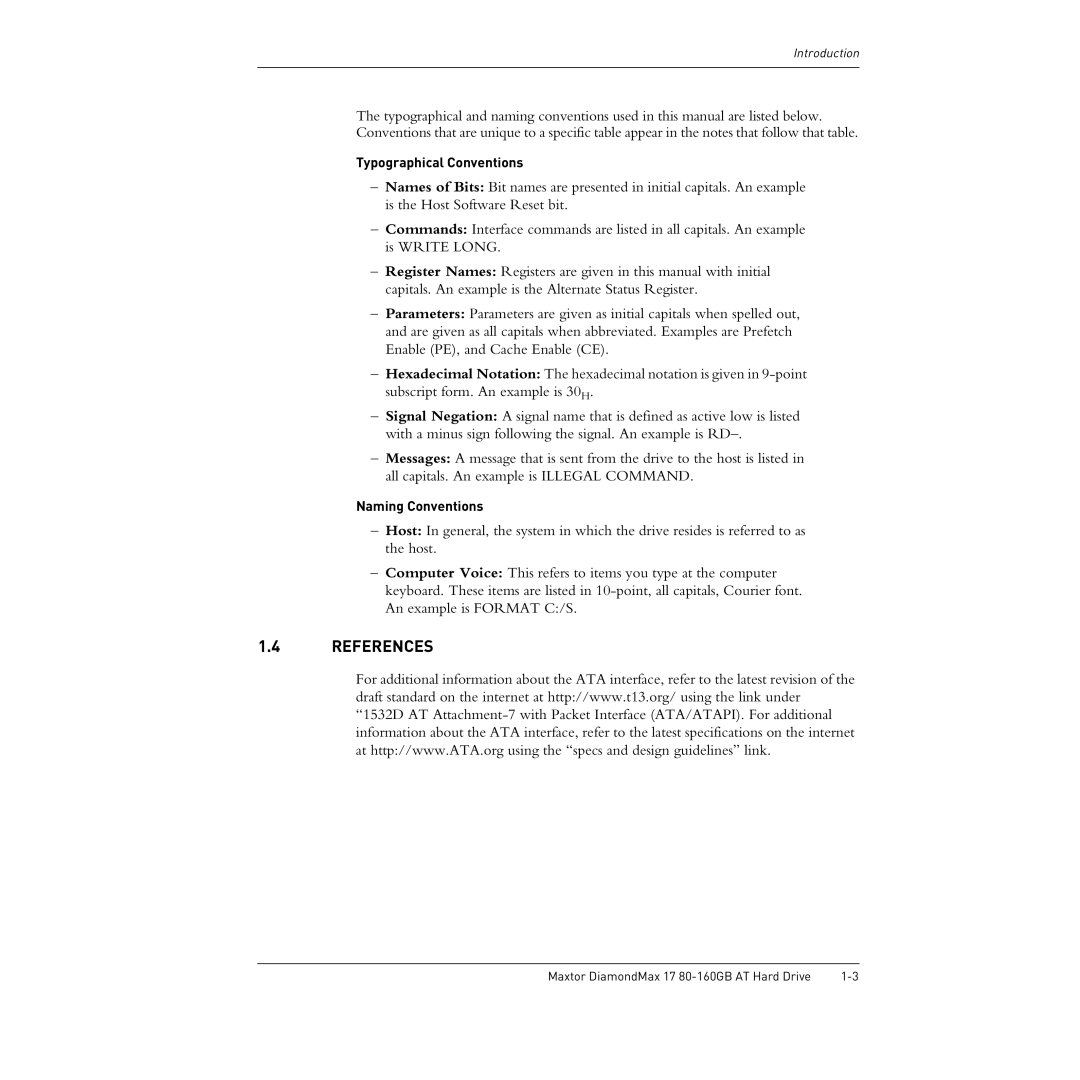
Introduction
The typographical and naming conventions used in this manual are listed below. Conventions that are unique to a specific table appear in the notes that follow that table.
Typographical Conventions
–Names of Bits: Bit names are presented in initial capitals. An example is the Host Software Reset bit.
–Commands: Interface commands are listed in all capitals. An example is WRITE LONG.
–Register Names: Registers are given in this manual with initial capitals. An example is the Alternate Status Register.
–Parameters: Parameters are given as initial capitals when spelled out, and are given as all capitals when abbreviated. Examples are Prefetch Enable (PE), and Cache Enable (CE).
–Hexadecimal Notation: The hexadecimal notation is given in
–Signal Negation: A signal name that is defined as active low is listed with a minus sign following the signal. An example is
–Messages: A message that is sent from the drive to the host is listed in all capitals. An example is ILLEGAL COMMAND.
Naming Conventions
–Host: In general, the system in which the drive resides is referred to as the host.
–Computer Voice: This refers to items you type at the computer keyboard. These items are listed in
1.4REFERENCES
For additional information about the ATA interface, refer to the latest revision of the draft standard on the internet at http://www.t13.org/ using the link under “1532D AT
Maxtor DiamondMax 17 |
